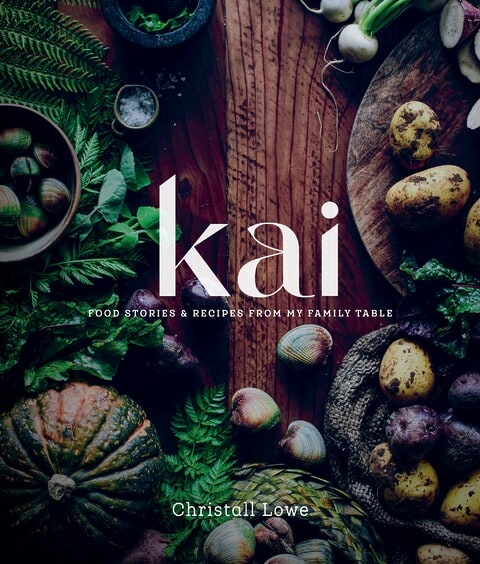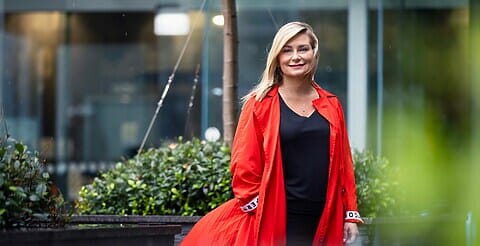Recipe developer, entrepreneur, artist, mum and professional photographer Christall Lowe has managed to hit that rare sweet spot of combining all her passions to create something that is not only beautiful, but also honours her whānau.
A self-described “serial entrepreneur”, Christall Lowe (Ngāti Kauwhata, Ngāti Maniapoto) has had an incredibly busy couple of years, but she’s living her dream. She’s just released her first cookbook – and not only did she write all the recipes (aside from a few from her nanas!) – she was also the photographer and did a fair chunk of the design. And she’s the proud mum of three children, the eldest in his teens. Being what sounded to me like a compulsive creative, I was surprised to hear Christall originally wanted to be a doctor.
“I’d given up art to focus on science,” she says. “But in sixth form, I met with the careers advisor and played a vocational card game that led to art and design. The advisor said, to my surprise, that I could study design at Victoria University, and that was that.”
She completed a degree in Interior Design, and her thesis was based around her dream restaurant. “A space that in its entirety ignites all the senses, and encapsulates all of the tikanga, the manaakitanga and the mauri of kai.”
Christall grew up in Feilding, Manawatū, and still lives there with her family. She says her grandfather has supplied their whānau with veges from his māra kai (vege garden, pictured right) for decades, and is grateful to have inherited his green thumbs and knowledge of native plants. And she’s still learning from him. He recently took her to a native plant nursery, which she says was “amazing – it was right here and I had no idea!”

He’s currently growing hue gourds, which are traditionally hollowed out, dried and used as drinking vessels. She says her family is all about making the most out of everything in life, especially food. “And celebrating the local ingredients all around us!”
Throughout her recipes, Christall peppers in native plants as ingredients. Her favourites, as it turns out, are literally quite peppery. “I love to make kawakawa tea – pick it fresh, crush and steep in hot water, or dry out the leaves and use a tea strainer. It’s got a bit of a kick at the end! I love horopito too. It just smells incredible – it reminds me of Belgian biscuits, and it works wonderfully with ginger – but use it in moderation as it is very spicy, like chilli.” Her all-time favourite native vege is kamokamo, which she loves boiled with a knob of butter melted over it, or diced and pan-fried in butter and salt.
She has also included recipes from both her nanas. “My nana never wrote any of her recipes down. Everything was in her head. I asked her to write down her incredible steamed pudding recipe, took the bit of paper and got to work. It turned out completely wrong! I called Nana and asked her, ‘Is there supposed to be butter in this?’ ‘Yeah, of course!’ she said. ‘Well, how much?’ ‘I dunno, half a block?’ ” Christall laughs. “She had written down everything except the butter. So there was a bit of trial and error.”
Other recipes handed down to Christall include her nana’s hāngī kono and her great nana Alice’s rice pudding. Christall’s personal favourites are her lamb roast with orange and mint sauce, paua and venison meatballs with rosemary syrup, honey roasted yams, her aunty’s fry bread, passionfruit sorbet, and, of course, her nana’s steamed pudding.

She says Kai is deeply personal and intended to honour her whānau, the recipes and knowledge of kai that has been passed down to her. And all their “flavour memories”.
“This book is mine and my whānau’s world of flavour memories,” she says. “I believe flavours can bring back memories unlike anything else. When I make my nana’s steamed pudding I’m right back in her kitchen with the talkback radio playing in the background. I can smell the tea towels. I can feel the velvet of the couch.
“There are so many stories behind family recipes. The photos I took for this book are intended to bring out the essence of my family’s kai, and the stories behind it.”
She hopes readers will be inspired to discover their own flavour memories, and make new ones with their own whānau. “Kai is our life,” she says. “I wanted to restore and uplift the mauri of our whānau after some difficult, grief-filled years. But Kai also celebrates all the good things. This is me and my whānau on a plate. This is our heart.”
Does she have plans for another? “Yes!” she says. “It’s already underway! I won’t say too much, but it will be everyday, easy kai.”
And so, the busy-ness continues. As a creative with many passions and a habit of taking on too much work, I relate all too well. “It’s hard to switch off; I get overwhelmed before I even realise it. But I couldn’t be happier. I’m doing what I should be doing.”

Photography: christall lowe and Helen Lea Wall








